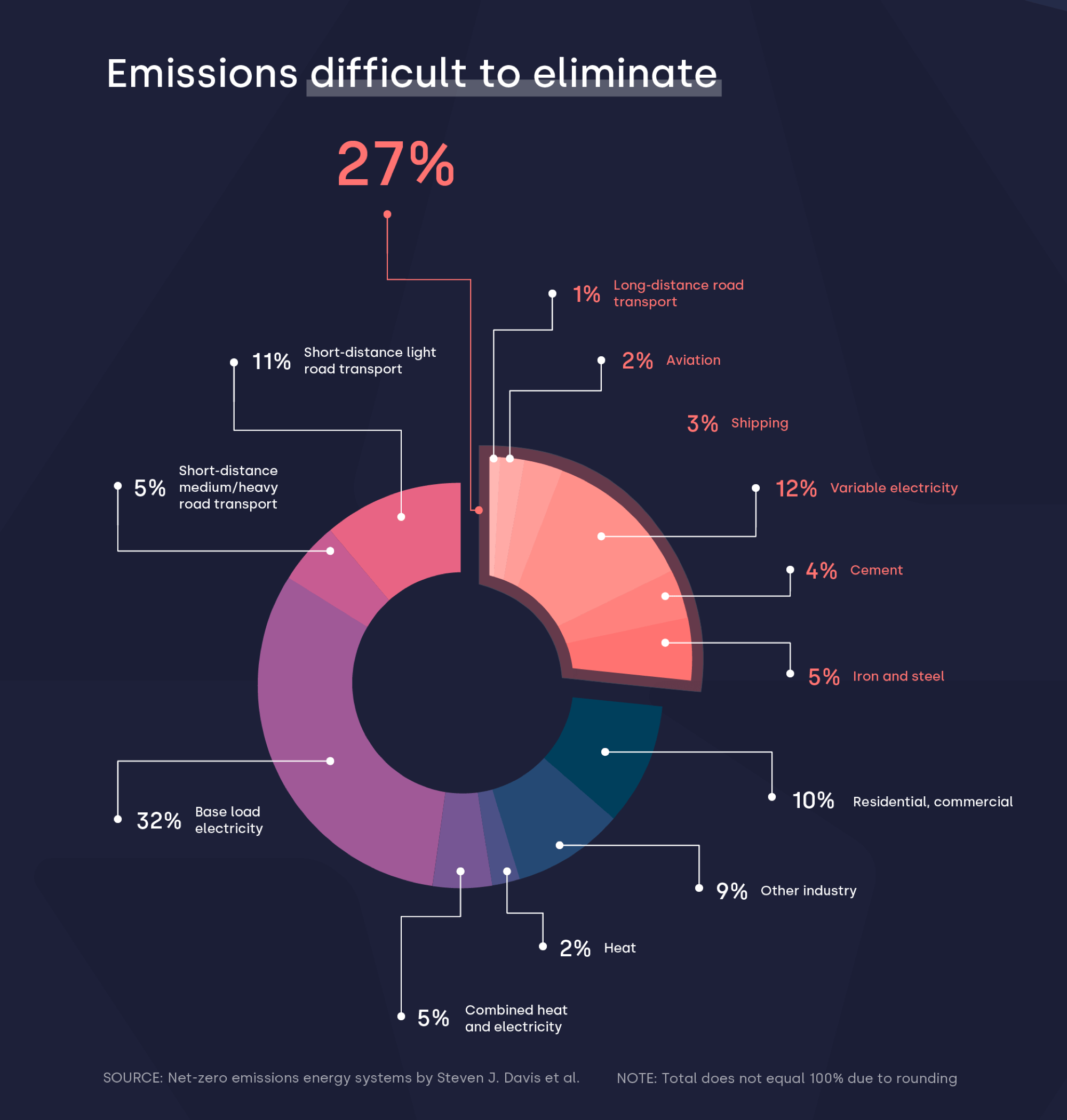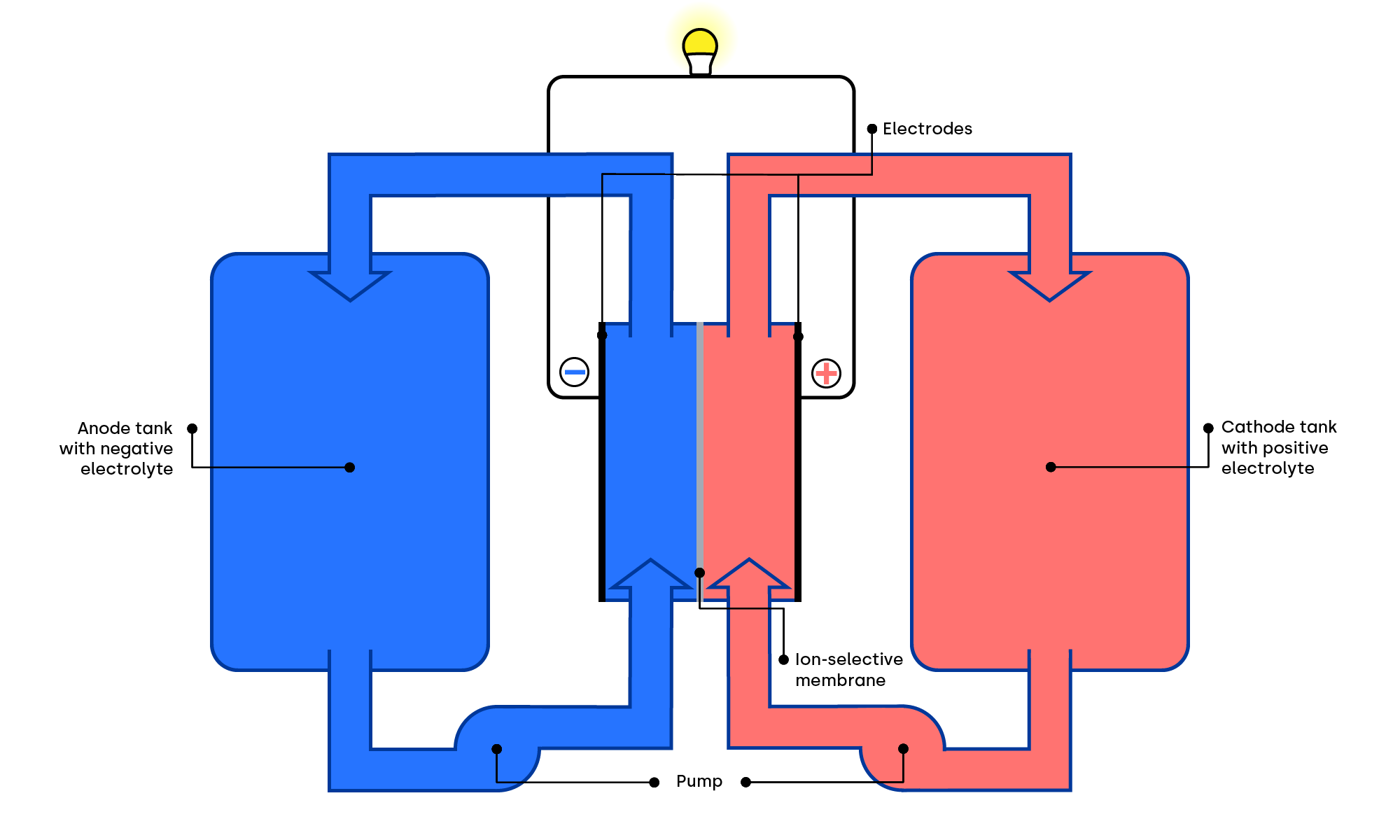
A study from 2018 has identified those troublesome sectors and quantified their share on total emissions. As the graphic shows, more than one quarter of all emissions CO2 are the emissions hard to eliminate. Even though today’s technologies are able to help us fight them, they are often in the early stages, therefore very costly. What is more, the political will to invest in such technologies is simply not enough in many countries.

When it comes to aviation, shipping and long-distance road transportation, alternative fuels might be the best path to be followed. Hydrogen, ammonia, biofuels or synthetic fuels thus still have in common one thing – their price. They simply cannot compete with the classical fossil fuels. Increasing their adoption and usage could eventually push the prices down and attract new investments into research and development. The motivation from the customers’ side is sadly insufficient.
Price plays a major role also in the production of cement, iron, and steel. These materials are crucial for the modern economy and extremely hard to decarbonize. Yes, we are trying. Europe, for example, is doing a great job. But all its efforts are yet still facing sharp and cheap competition from the countries that do not care about CO2 reduction as much. Such as China. What we need is a global solution.
Demand response
In the energy sector, switching to renewable energy sources (RES) appears to be a logical and economical solution to tackle emissions. In the case of electricity, there is one particular rule that needs to be respected. The amount of electricity produced must be equal to the amount of electricity needed at a specific time. Not more, not less. This could be a challenge for the variable and unpredictable green energy sources, like solar panels.
Every surplus or deficiency of energy must be balanced with fast responding technologies. For example, fossil fuel power plants to generate energy, pumped-storage hydropower to store surplus energy. This involves tons of emissions CO2. Decarbonization of the energy sector thus doesn’t need to be so hard. With FUERGY, the whole world can start reducing CO2 emission now.
The greatest credit for the elimination of carbon emissions in recent years is due to the transition from coal to gas power plants. What we also found out is that instead of replacing fossil power plants, renewables are only covering the growing demand for energy. In 2018, if we didn’t want to keep building more and more fossil power plants, we should have installed 3,5 times more renewables as we did in reality. Nevertheless, we can still expect the slow phase-out of fossil fuels in the energy sector. Renewables alone don’t have enough power to completely replace the fossil plants. Mostly because of their unpredictable nature. However, paired with smart technology end energy storage they can shake the foundations of the energy sector as we know it.
Sunny but windy, rainy at night
This is how should sound the ideal weather forecast for renewables. Unluckily, we don’t know how to control the weather (yet) so the electricity supply highly relies on back-up power plants. Mismatch of production and consumption caused by daily consumption peaks, extreme events (e.g. heat waves) or the changing of the seasons have, however, has one zero-carbon solution – the energy storage. There are four main categories of energy storage – mechanical, chemical, electrochemical and thermal.
The best way to deal with the short-term imbalances caused by the consumption peaks, such as Duck curve, is the lithium ion (‘li-ion’) battery. Thanks to its scalability, this battery is ideal for home installations. In order to take maximum advantage of it (financially and in terms of the capacity), it is necessary to charge and discharge the battery relatively frequently – even multiple times per day.
Technology, such as “brAIn” by FUERGY, can not only prepare very precise predictions about energy production and consumption of the site, it can fastly respond and manage the battery according to the specific needs as well.
Energy for bad times
Long-term energy storage (understand weeks or months) is a tougher nut to crack. Besides batteries, there are also other methods that can efficiently conserve energy for a longer time.
Mechanical methods that use kinetic and gravitational energy are not just technologically very simple but also highly resistant to energy losses over time. Apart from the classic mechanical technologies like the pumped-storage or compressed air generators, we have the concrete gravity trains riding up and down the hill, or cranes moving the concrete blocks. Using the existing infrastructure or favorable natural conditions can also help those alternative technologies to be economically more viable. In the UK, for example, they want to use the disused mine shafts based on the winch and hoist system.
Storing energy in the form of the heat is, in some cases, surprisingly more efficient. Especially for longer terms. All we need to do is to heat up the materials like sand, concrete or different kind of rocks. The subsoil then offers great insulation for heat conservation. The largest thermal heat storage pit in the world with a water volume of 200 000 m3 is in Vojens, Denmark. The solar heating plant paired with the storage can supply as much as 50% of the local annual heat production to the network.
Alternative fuels are a chemical solution for long-term energy storage and electrochemical batteries have their place in this category as well. The redox flow battery (RFB) is using two electrolytes (an anolyte and catholyte) to store the energy. This battery has a long service life as well as high resistance to self-discharging. The most suitable filling, however, appears to be the costly vanadium. For that reason, the researchers are intensively developing cheaper alternatives based on organic compounds. The biggest vanadium redox flow battery with the capacity of 800 MWh should come online in 2020 in Dalian, China.

We have the technologies and methods to eliminate emissions. Some just need a bit more time, investment, and especially political support. In the meantime, we can reduce them as individuals. How can we do this most effectively? We’ll reveal that to you soon.
Are you ready to be part of the renewable energy revolution and take your energy independence to the next level? Contact us today! Our experts are here to help you find a tailor-made solution to your needs.
New dimension of energy optimization





